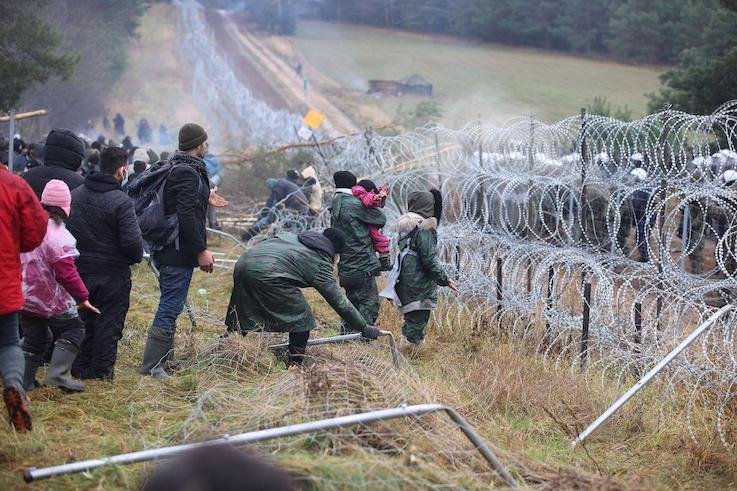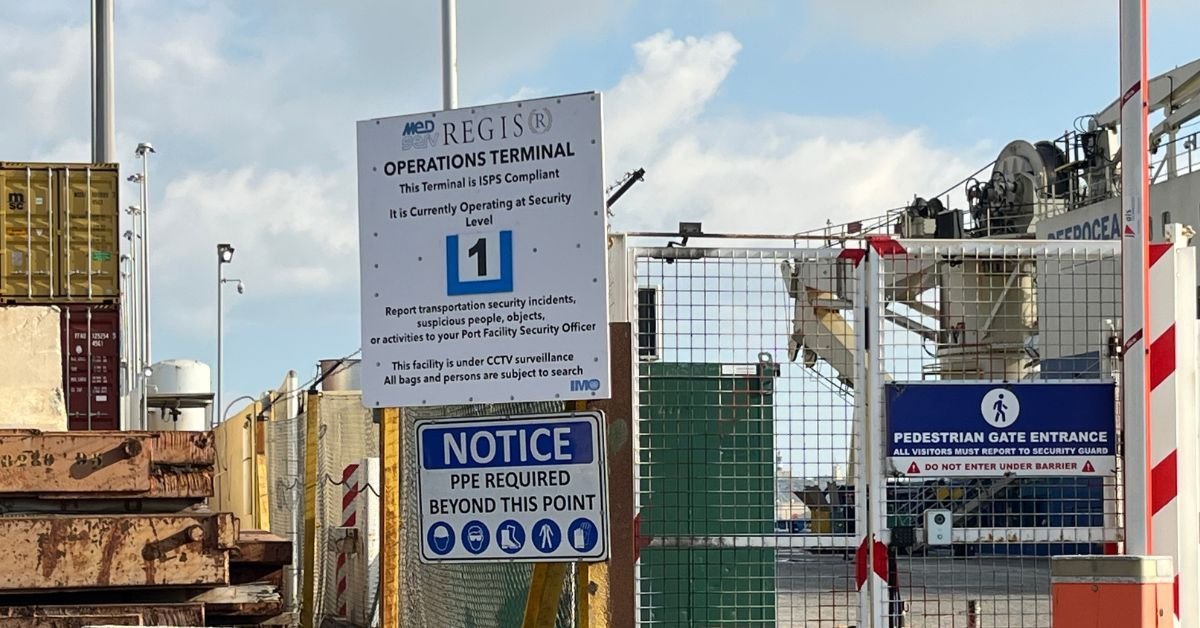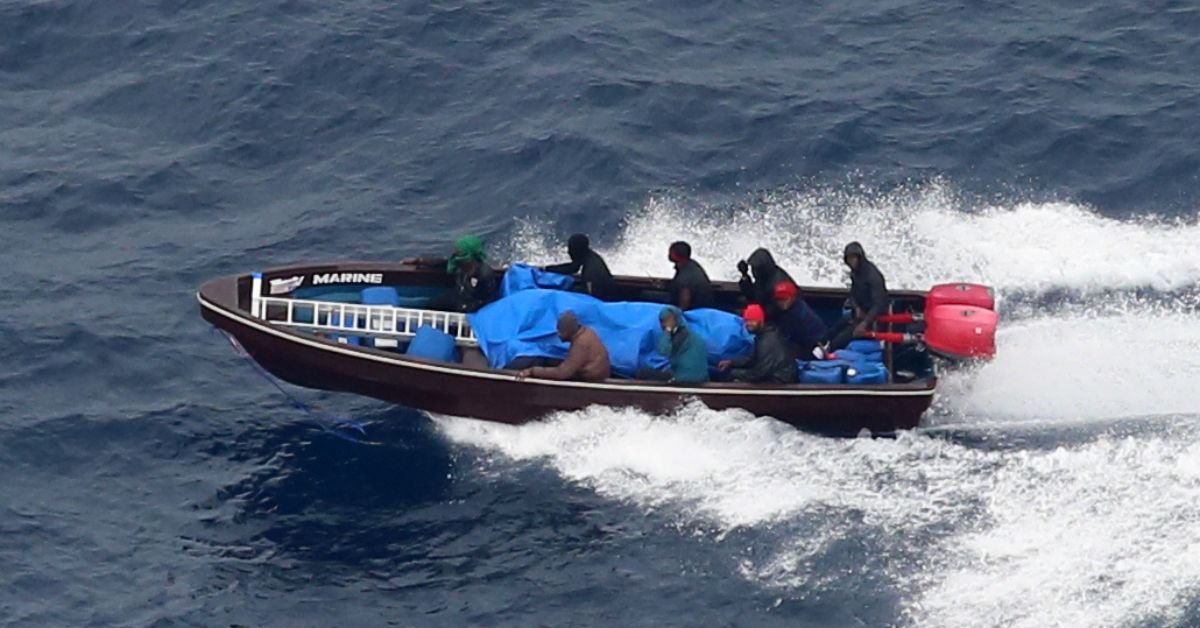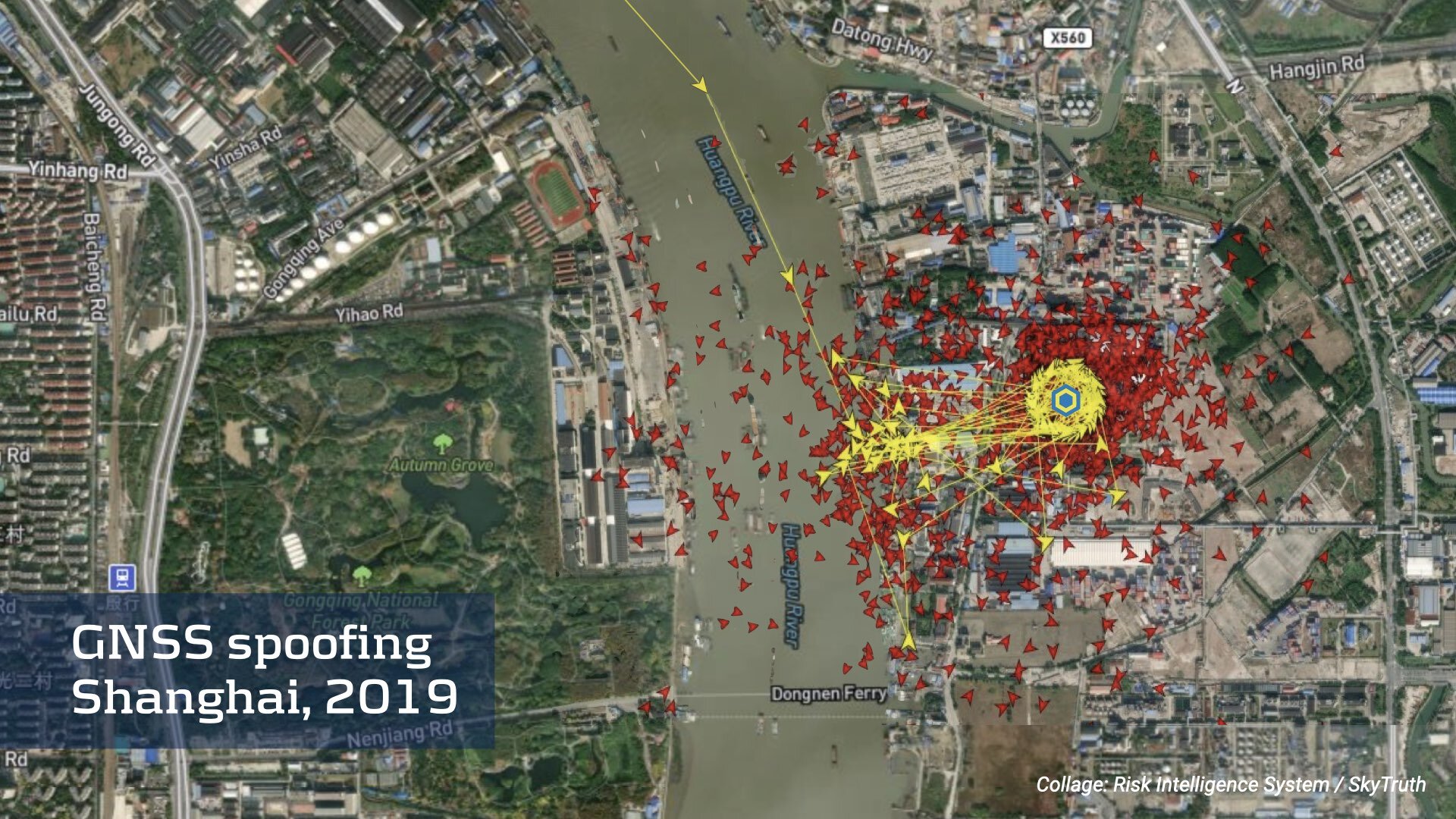
Using intelligence and industry best practice to combat criminal incidents against the supply chain
Recent high-impact incidents in Germany, France and Italy underscore the severe risks posed by organised criminals to supply chain and commercial facilities. Utilising intelligence from LandRisk Logistics and adhering to TAPA standards can fortify your organisation's security and resilience against criminal activities.
We recorded three very different, high impact incidents on LandRisk Logistics that took place between the 14-17 June 2024 which highlight the dangers that capable, motivated and well resourced criminals pose to the supply chain and commercial facilities.

Cross-border infrastructure in Northern Europe in a shifting geopolitical landscape
Last week, the spotlight was on Northern Europe's cross-border infrastructure in a shifting geopolitical landscape during the STRING and Region Skåne event at Connecting Europe Days in Brussels. With a focus on the Helsingør-Helsingborg fixed link and the Oslo-Göteborg railway stretch, the importance of these connections was underscored.
Hans Tino Hansen, CEO of Risk Intelligence, along with other specialists, added invaluable insights during the panel discussion, emphasising the intersection of civilian and military infrastructure needs.

Migrant smuggling and road freight transport: Current trends and patterns
Whilst the question of irregular migration, which continues to lie at the heart of European politics, overwhelmingly concentrates on maritime crossings of the Mediterranean Sea and the English Channel, recent data highlights a slow yet significant resurgence of enterprises placing road freight transport at the centre of their strategies.
This article delves into recent numbers, trends, and incidents to explain why irregular migration and smuggling remain a security threat to logistics operations.

Cargo theft: the threat posed by organised criminal groups
Cargo theft criminals have been keeping the LandRisk Team busy during Q4 this year. Of particular interest is the presence of organised criminal groups (OCGs) carrying out cargo thefts on main logistics routes in Germany. OCGs present a significant threat to logistics operators as when they do strike the impact is often much higher due to the increased level of confidence, capability and resources these groups typically employ.
The A-1 motorway between Bremen and Hamburg has been hit particularly hard. On the evening of the 5th November 67 trucks had their trailers slashed in incidents at the Otsetal South, Grundbergsee South and Hatzte service/rest areas.

The sea of drones: how unmanned technology is remaking naval warfare
As naval drones and drone swarms redefine maritime strategies, a deeper analysis reveals how they challenge traditional naval operations and pave the way for innovative tactics in an increasingly complex and contested seascape.
In the ever-evolving arena of naval warfare, a transformation of profound significance is underway. This is evident in the use of smaller unmanned surface vessels (USVs), which has risen from smaller scale use in Yemen in the mid-2010s, to a veritable Ukrainian USV naval programme operating at full scale in 2023.

Northern Sea Route: The rising Chinese influence and Russia's concessions
As Russia attempts to find ways to alleviate the impact of Western sanctions, and finding alternative trading partners and trade routes, China has seized the opportunity and is increasingly asserting itself on the Northern Sea Route. While highlighting the inequalities of the Russian-Chinese relationship, this will also have an impact on the wider geopolitical balance of power.
As global warming makes the Arctic's Northern Sea Route (NSR) more accessible, a complex geopolitical scenario is unfolding, with China taking the lead. Despite Russia's historical dominance over the NSR, it is now being challenged by China's robust shipbuilding industry and its aggressive Arctic strategies.

AI tools in hybrid warfare - A double-edged sword
As technology advances, so does the potential for its misuse. Large language machines (LLMs) and image generators have become extremely popular, seemingly overnight, with the launch of ChatGPT 3 in November 2022. Since then, companies and individuals have scrambled to figure out uses for them for a variety of purposes or sectors.
LLMs continue to be upgraded and refined by their creators, and Adobe recently released their “Generative Fill”- AL tool for Photoshop, highlighting how the tech companies are competing fiercely to have the best possible software. However, these tools also have the potential to be used for malicious purposes, particularly in relation to hybrid threats.

The Saudi-Iranian Agreement or the commodification of commitment
The recent Saudi-Iranian agreement to mend diplomatic relations will likely improve maritime security at a high level by reducing a source of regional tension. However, the transactional nature of the agreement – where everything in the future is negotiable – leaves much room for regional proxy forces to continue to act. As well, the other potential flashpoint, between Iran and Israel, remains unresolved.
The Saudi-Iranian deal announced by China carries significant implications, although at this stage these remain mostly symbolic, and might mean more for Chinese-US relations than for the two middle-eastern rivals.

Hybrid threats to logistics and the wider supply chain
While hybrid threats are as old as war itself, the emerging threat from Russian aggression and rise of China has once again made hybrid threats relevant to consider even for private companies.
Hybrid threats refer to a combination of conventional and non-conventional tactics that adversaries use to achieve their objectives. These threats can originate from a wide range of actors, including state-sponsored groups, criminal organizations, or even lone individuals.

One year on: Analytical successes and failures in assessing Russian and Ukrainian armed forces and the war in Ukraine
This article looks at how intelligence analysts generally and in Risk Intelligence looked at Russian and Ukrainian military capability prior to the invasion of Ukraine, how we were wrong, and how we should learn of our mistakes.
The article in Washington Post “Road to war: U.S. struggled to convince allies, and Zelensky, of risk of invasion” by Karen de Young explains the gradual increase in US intelligence, assessment, and conclusions on Russian plans to attack Ukraine and how the US intelligence world went from finding an invasion of Ukraine unlikely to becoming increasingly likely and how difficult it was to convince allies and Ukraine that an invasion was coming.

Descent into protest – strike background
Strike action in Spain over rising fuel prices has led to significant protests nationwide disrupting logistics routes, industrial areas, ports, and facilities. In some instances, protests have turned violent with trucks damaged and drivers threatened. The authorities have mobilised the National Police and Civil Guard to provide security escorts for convoys of trucks.
An indefinite nationwide strike by transport workers began in Spain on 14 March 2022 in response to rising fuel prices. Strike action included protests and picket lines on main logistics routes, industrial areas, ports, and other logistics facilities.
The strike was called for by the truck owners association called the Platform for the Defence of Transport but did not represent the majority of Spanish truck drivers. The strike action was not supported by Spain’s main transport trade unions nor its road haulage federations.

A spike in activism and fuel theft – a clear and present danger to manufacturers and logistics providers
The ongoing Ukraine conflict has compounded the recent phenomenon of climate activism protests and led to strike action by the transport sector over rising fuel costs. There have also been protests at some state border crossing points by Ukraine anti-war protesters. It has also led to a spike in the ever present threat of fuel siphoning from parked trucks and logistics facility fuel storage tanks.
These issues are having a direct impact on the supply chain. They hit logistics operators particularly hard and also the manufacturers they support in the form of rising costs and direct or indirect disruption through strike action by transport sector workers, climate change activists and anti-war protesters.

Statement on Russian invasion of Ukraine from Risk Intelligence CEO Hans Tino Hansen
The Russian invasion of Ukraine and the following terrible loss of life, destruction of civilian infrastructure and massive number of refugees from the war is not something that the rest of the World can tolerate. We at Risk Intelligence are fully condemning the illegal invasion and are supporting the victims of the war in a number of ways.
Besides providing an updated intelligence picture of the war to our clients, Risk Intelligence has been engaged in assisting our clients, and even non-clients, by facilitating and coordinating the evacuation of ships’ crews from vessels which remained in Ukrainian ports in cooperation with a British response consultant firm.

The ISPS Code and port obligations
This article will look at the obligations of port facilities under the ISPS Code, in particular the Ports of Facility Security Assessment (PFSA) and the Port Facility Security Plan (PFSP) to mitigate security threats against vessels, crew and cargo and give some examples of how these measures are implemented.
Moreover, we will analyse the three security levels and how a port is required to maintain a security level while conducting operations.

Gulf of Guinea - 2021 Annual Figures and Situation Update
While there have been some improvements related to piracy in 2021, illicit activities at sea are still widespread across the Gulf of Guinea. The presence of international navies has been widely mentioned as one of the main reasons, yet outside actors have been present in the region for a long time and continue to focus almost exclusively on counter-piracy operations. At the same time, the situation on land has become even more complex during the Covid-19 pandemic, not only in Nigeria

Understanding the difference between ‘risk’ and ‘threat’
Why do the risks for different vessels vary when confronted with the same threat? And which tools allow you to accurately assess the specific risk to your vessel given an existing threat in an area?
This article will cover both threats and risks, as well as how these two terms can shift and be extremely specific depending on the type of operations being conducted. We will provide you with a comprehensive overview of how the threat in a specific location can be used to calculate the probable risk a vessel faces throughout a voyage.

Port weaknesses: Mitigating against the risk of stowaways
We take an in-depth look at a specific South African port that is notorious for stowaways, but the methodology and insights are applicable to any port visit.
We'll look at how the code is laid out, give a few requirements and responsibilities where the majority of stowaways embark, look at one specific port’s areas for improvement, and discuss some of the recommended stowaway discovery measures on your vessels. Some of the relevant factors are highlighted in the ISPS code's ship security assessment sections.

BACKGROUND: GNSS spoofing in China and beyond
Global Navigational Satellite System (GNSS) spoofing is an ongoing concern for the maritime industry. Ships have reported a number of cases of GNSS interference and jamming in the eastern and central Mediterranean Sea, the Persian Gulf and multiple Chinese ports.
The interference and jamming have resulted in the loss of or false signals, affecting vessels' navigation and communication equipment. GNSS spoofing could potentially paralyse shipping lanes, increase navigation risks and attract malicious actors to use it to mask illegal activities.

BACKGROUND: Opportunities and pitfalls for Sudan’s return to the maritime trade
Sudan is poised to return to the global markets it had been left out of since the 1990’s. Following the 2019 revolution that ousted former President Omar al Bashir, Sudan has accelerated its return to the international scene. This means that new opportunities for investment and trade are likely to follow.
While Sudan may suffer from an underdeveloped economy and infrastructure, understandably limiting its attractiveness to foreign trade, change is underway. Investment programs from the Gulf, China and other economies are expected to boost production of export goods from Sudan’s coasts. The end of the Bashir regime also portends new economic opportunities.

BACKGROUND: Impact of increase in drone and missile attacks on Saudi Arabia’s oil and transport infrastructure on commercial shipping
In the past few weeks, there has been a marked increase in the number of attacks on Saudi Arabia’s oil and transport infrastructure. Missiles and drones have been launched on a weekly basis against a number of Saudi targets, but some observers in the maritime security sector appear unfazed, even as large oil facilities have been hit.
The low risk for commercial shipping despite this increase in drone and missile attacks can be attributed to the nature of the targets, and the intentions of those behind the attacks. Saudi Arabia is involved in a conflict in Yemen, and is fighting against the Houthis. While the Houthis have previously directed missiles and drones at vessels, and may do so again, in general they prefer launching these relatively complicated weapons at static targets in Saudi Arabia.
